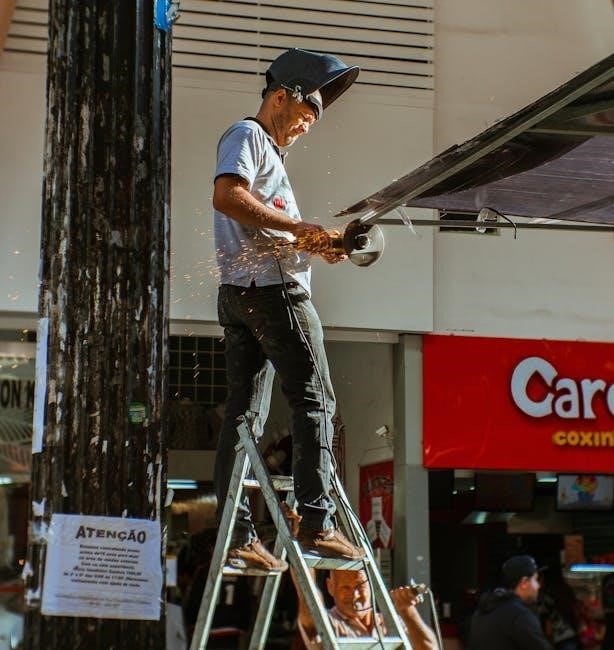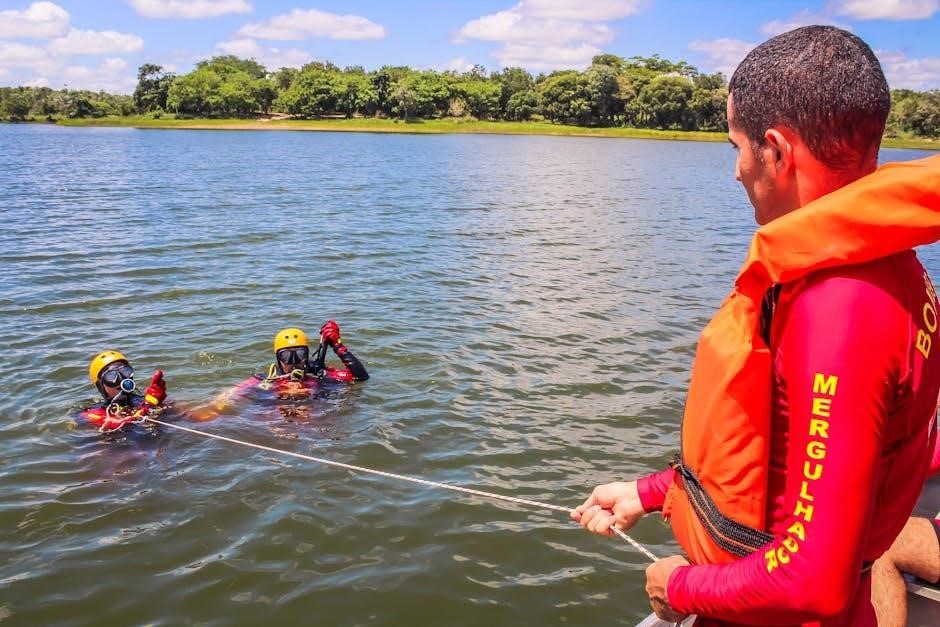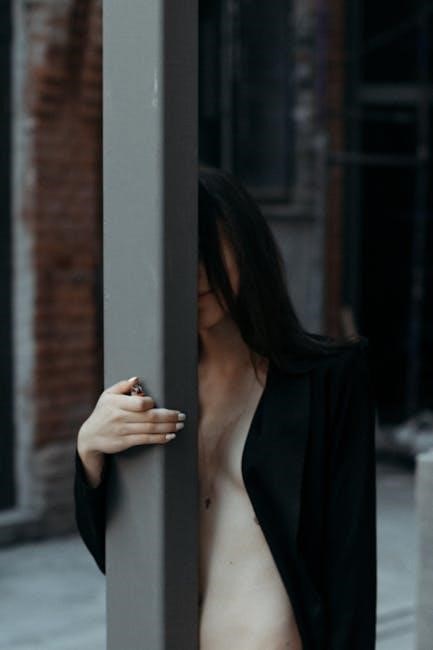Overview of LASIK Post-Operative Care
Proper LASIK post-operative care is crucial for optimal recovery and preventing complications․ It involves rest‚ eye drops‚ avoiding water‚ follow-up appointments‚ and activity restrictions to ensure safe healing and clear vision․

Immediate Post-Operative Instructions
After LASIK‚ rest with eyes closed for 4-6 hours‚ use prescribed drops to prevent infection‚ and wear protective shields while sleeping to ensure safe initial healing․
2․1․ Resting Your Eyes
Resting your eyes is critical immediately after LASIK surgery․ Patients should keep their eyes closed for the first 4-6 hours to allow the cornea to begin healing․ Avoiding screens‚ reading‚ or activities that strain the eyes is essential during this period․ Wearing protective eye shields while sleeping prevents accidental rubbing‚ which could dislodge the corneal flap․ It’s also important to minimize exposure to bright lights or irritants like dust or wind․ Resting helps reduce discomfort and promotes a smooth recovery․ Following these guidelines ensures the eyes heal properly‚ minimizing the risk of complications and supporting optimal vision correction outcomes․
2․2․ Eye Drop Protocol
Adhering to the prescribed eye drop protocol is essential after LASIK surgery to promote healing and prevent complications․ Patients are typically given antibiotic drops to minimize infection risk and artificial tears to address dryness․ These drops should be used as directed‚ usually 3-4 times daily‚ for 1-2 weeks․ Proper technique is crucial to avoid contamination‚ such as not touching the dropper to the eye․ Lubricating drops may be continued for several months to manage dry eyes․ Following the precise schedule ensures optimal healing‚ reduces discomfort‚ and supports clear vision recovery․ Consistency in using the drops as instructed by your surgeon is key to achieving the best outcomes and avoiding potential issues during the recovery process․
2․3․ Avoiding Water and Chemicals
Avoiding water and chemicals is critical during the initial healing phase after LASIK surgery․ Patients should keep water‚ soap‚ and hair care products away from their eyes for at least one week․ Swimming‚ hot tubs‚ and exposure to harsh chemicals should be avoided for 2-4 weeks to reduce infection risks․ When washing the face‚ use a clean‚ damp cloth to gently clean around the eyes without rubbing․ This precaution helps protect the cornea during its healing process and prevents potential complications․ Proper adherence to these guidelines ensures a safer and more effective recovery‚ minimizing the risk of infections or delays in healing․

Follow-Up Care and Appointments
Regular follow-up appointments are essential to monitor healing‚ address concerns‚ and ensure optimal results․ Patients should attend all scheduled visits as directed by their surgeon․
3․1․ Scheduled Post-Operative Visits
Scheduled post-operative visits are critical for monitoring the healing process and ensuring proper recovery․ Patients typically attend follow-up appointments within the first 24-48 hours‚ then again at one week‚ one month‚ and up to six months post-surgery․ These visits allow the surgeon to assess the eyes for any signs of complications‚ such as infection or dry eye syndrome․ They also provide an opportunity to address any concerns or symptoms the patient may be experiencing․ Regular check-ups help ensure that the eyes are healing as expected and that vision is improving․ Consistent attendance at these appointments is vital for achieving the best possible outcomes and maintaining long-term eye health․
3․2․ Reporting Symptoms
Patients should immediately report any unusual or concerning symptoms to their surgeon․ Common symptoms to watch for include worsening vision‚ severe pain‚ excessive redness‚ or increased sensitivity to light․ Other signs‚ such as flashes of light‚ floaters‚ or halos around lights‚ should also be brought to attention․ Early detection of complications‚ such as infection or corneal issues‚ is crucial for timely intervention․ Patients are encouraged to contact their care team promptly if they experience unexpected discomfort or vision changes․ Regular communication with the surgeon ensures any issues are addressed before they escalate‚ promoting a smooth and successful recovery․ Reporting symptoms early can prevent potential complications and safeguard optimal outcomes․

Activity Restrictions After LASIK
Avoid activities risking eye trauma‚ such as contact sports or swimming‚ for several weeks․ Protect eyes from harmful environments and follow specific activity guidelines provided․
4․1․ Avoiding Physical Activities
Avoiding physical activities is essential after LASIK to prevent complications․ Refrain from contact sports‚ swimming‚ or any activity that could risk eye trauma․ Avoid heavy lifting or bending‚ as it may increase intraocular pressure․ Rubbing the eyes should be strictly avoided‚ even if they feel irritated․ Protecting the eyes from accidental bumps or chemical exposure is crucial; Patients should avoid public gyms for at least 5 days to reduce infection risks․ Wear protective eyewear during high-risk activities․ Follow specific timelines for resuming exercises‚ typically 1-2 weeks post-surgery․ Consult your surgeon for personalized advice on safely returning to physical activities․
4․2․ Driving After LASIK
Driving after LASIK requires caution to ensure safety and proper healing․ Most patients can resume driving within 24 hours‚ but clarity of vision and comfort must be assessed․ Avoid driving if vision is blurry‚ halos‚ or glare are present․ Night driving may be challenging due to potential visual disturbances․ Always consult your surgeon for clearance․ Wear sunglasses during the day to reduce light sensitivity․ Avoid driving if experiencing discomfort or vision issues․ Follow-up appointments will help determine when it’s safe to drive․ Prioritize eye health and safety to prevent complications and ensure optimal recovery․

Eye Protection and Safety
Protecting your eyes after LASIK is essential to prevent trauma and infection․ Wear sunglasses outdoors and use eye shields at night to safeguard your eyes during healing․
5․1․ Wearing Sunglasses
Wearing sunglasses is a critical aspect of post-LASIK care to protect your eyes from harmful UV rays‚ glare‚ and environmental irritants․ Sunglasses should be worn outdoors‚ especially in bright light‚ to reduce discomfort and prevent light sensitivity․ Avoid wearing them at night unless instructed by your surgeon․ Choose sunglasses with UV protection to shield your eyes during the healing process․ This precaution helps minimize the risk of complications and supports optimal recovery․ Your eye care provider may also recommend specific types of sunglasses for added protection․ Consistent use of sunglasses ensures your eyes remain safe and comfortable while healing․
5․2․ Using Eye Shields
Using eye shields is essential to protect your eyes during the initial healing phase after LASIK․ These shields prevent accidental rubbing or bumping‚ which could dislodge the corneal flap․ Wear them at night or during naps to ensure protection while sleeping․ Keep the shields clean and follow your surgeon’s instructions for proper use․ Eye shields are typically worn for the first few days post-surgery to minimize the risk of complications․ They act as a protective barrier‚ allowing your eyes to heal undisturbed․ Consistent use of eye shields supports a smooth recovery and helps maintain the integrity of the corneal flap during the critical early stages of healing․

Managing Dry Eyes After LASIK
Dry eyes are common after LASIK due to reduced tear production․ Use lubricating drops frequently and avoid irritants like wind and dust to alleviate discomfort․
6․1․ Lubricating Drops
Lubricating drops are essential for managing dry eyes after LASIK․ They are prescribed to prevent infection and reduce discomfort․ Use the drops as directed by your surgeon to maintain eye moisture and promote healing․ Avoid sharing drops or using expired products‚ as this can increase infection risk․ If prescribed multiple types of drops‚ allow 5-10 minutes between applications․ Over-the-counter artificial tears may be used if approved by your doctor․ Consistent use of lubricating drops helps restore tear production and ensures a smoother recovery․ Continue using them for 4-6 months or as advised to address persistent dryness and irritation․
6․2․ Avoiding Irritants
Avoiding irritants is crucial during the LASIK recovery period to prevent discomfort‚ dryness‚ and potential complications․ Keep the eyes away from water‚ chemicals‚ and makeup for at least two weeks․ Avoid exposing your eyes to smoke‚ dust‚ or strong fumes‚ as these can exacerbate dryness and irritation․ Refrain from using hair spray or applying perfumes near the face to minimize exposure to airborne irritants․ Additionally‚ avoid rubbing your eyes‚ as this can dislodge the corneal flap and delay healing․ Protecting your eyes from environmental irritants ensures a smoother recovery and reduces the risk of complications․ Always follow your surgeon’s guidance for specific precautions tailored to your situation․

Avoiding Complications
Adhering to post-operative instructions is key to preventing complications․ Keep eyes protected‚ avoid harmful activities‚ and follow guidelines to minimize risks and ensure proper healing after LASIK surgery․
7․1․ Preventing Infection
Preventing infection is a critical aspect of LASIK post-operative care․ Use prescribed antibiotic eye drops as directed to minimize bacterial growth․ Avoid exposing your eyes to water‚ chemicals‚ or unclean environments during the initial healing phase․ Keep your hands clean when handling eye drops or touching your face․ Avoid sharing personal care items like towels or makeup to reduce contamination risk․ Wear protective eyewear in dusty or hazardous settings to prevent foreign particles from entering your eyes․ Attend all follow-up appointments to monitor healing and address any potential issues early․ By adhering to these guidelines‚ you can significantly reduce the risk of infection and ensure a safe recovery․
7․2․ Avoiding Eye Rubbing
Avoiding eye rubbing is essential after LASIK surgery to protect the delicate corneal flap created during the procedure․ Rubbing can dislodge or damage the flap‚ leading to complications like infections‚ irregular healing‚ or vision distortions․ Patients may experience discomfort‚ itchiness‚ or a sensation of something being in the eye‚ but it’s crucial to resist the urge to rub․ Instead‚ use prescribed lubricating drops to soothe irritation․ Wear protective eyewear‚ especially at night‚ to prevent accidental rubbing during sleep․ This precaution should continue for several weeks or as advised by your doctor to ensure proper healing and maintain the integrity of the corneal flap․

Returning to Normal Activities
Most patients resume work and daily tasks within a few days post-LASIK‚ with driving typically allowed once vision stabilizes․ Avoid strenuous activities and ensure eye protection during sports to prevent trauma․
8․1․ Resuming Work and Daily Tasks
Most patients can resume work and daily activities within a few days after LASIK‚ depending on their job requirements and vision recovery․ It’s essential to avoid strenuous tasks‚ bending‚ or heavy lifting for at least a week to prevent eye strain․ Driving is typically allowed once vision stabilizes‚ usually within 24-48 hours‚ but this should be confirmed by your surgeon․ Avoid rubbing your eyes and keep them lubricated with prescribed drops to ensure comfort․ For jobs involving screens‚ take regular breaks to reduce eye fatigue․ Return to normal activities gradually‚ prioritizing eye comfort and safety to support the healing process and achieve optimal results․
8․2․ Makeup and Personal Care
After LASIK surgery‚ it’s important to avoid makeup‚ lotions‚ and creams near the eyes for at least one to two weeks to minimize infection risks․ Avoid applying eye makeup‚ including mascara and eyeliner‚ until your surgeon confirms it’s safe․ Hair spray and perfumes should also be kept away from the eyes․ When resuming makeup use‚ choose clean‚ fresh products and avoid sharing makeup tools․ Gently clean your eyelids with a damp cloth if needed‚ but never rub your eyes․ Return to your normal skincare routine cautiously‚ ensuring no products irritate your eyes․ Your surgeon will provide specific guidance on when it’s safe to resume personal care activities‚ balancing comfort and proper healing․

Long-Term Care and Maintenance
Long-term LASIK care involves routine eye exams‚ protecting eyes from UV light‚ and using lubricating drops as needed to maintain eye health and clear vision․
9․1․ Ongoing Eye Health
Maintaining long-term eye health after LASIK requires regular follow-ups with your eye surgeon to monitor vision stability and address any potential concerns․ Patients should continue using prescribed eye drops to manage dryness and protect against infection․ Protecting your eyes from UV light by wearing sunglasses outdoors is essential to prevent long-term damage․ Additionally‚ avoiding irritants like smoke or chemicals can help preserve eye health․ While most patients achieve stable vision‚ some may experience minor fluctuations‚ emphasizing the importance of ongoing care․ Annual eye exams are recommended to ensure overall eye health and detect any underlying issues early․ Proper maintenance ensures lasting clarity and comfort post-LASIK․
9․2․ Adjustments and Enhancements
Some patients may require minor adjustments or enhancements after LASIK to achieve optimal vision results․ These procedures are typically considered if vision remains blurry or if refractive errors persist beyond the initial healing period․ Enhancements are usually performed 3-6 months post-surgery‚ allowing adequate time for the eyes to stabilize․ The decision to proceed with adjustments is made in consultation with your surgeon‚ based on the health of your eyes and the degree of correction needed․ It’s important to follow your surgeon’s guidance regarding timing and suitability for additional procedures․ Regular follow-ups ensure any necessary adjustments are made to refine vision and meet individual goals‚ enhancing overall satisfaction with the LASIK outcome․

Importance of Adhering to Post-Operative Instructions
Adhering to post-operative instructions after LASIK is essential for ensuring proper healing‚ minimizing complications‚ and achieving the best possible vision outcomes․ Failure to follow guidelines can lead to issues such as infection‚ prolonged dry eyes‚ or incomplete healing․ By carefully following your surgeon’s advice‚ you protect your eyes during the critical recovery phase․ This includes using prescribed eye drops‚ avoiding water exposure‚ and refraining from rubbing your eyes․ Proper care also reduces the risk of long-term side effects and supports the cornea’s healing process․ Consistency and patience are key to optimizing results and ensuring a smooth recovery․ Remember‚ your adherence directly impacts the success of the procedure and the clarity of your vision in the months and years to come․
After LASIK‚ rest your eyes immediately‚ avoid water‚ and use prescribed eye drops to prevent infection and dryness․ Attend all follow-up appointments and report any unusual symptoms․ Wear sunglasses outdoors and protective shields while sleeping to safeguard your eyes․ Avoid rubbing your eyes and physical activities for the first week․ Resume driving only when cleared by your surgeon․ Keep makeup‚ lotions‚ and chemicals away from your eyes for a week․ Use lubricating drops to manage dryness and avoid irritants like smoke․ Gradually return to normal activities‚ ensuring proper eye protection․ By following these tips‚ you promote healing‚ minimize risks‚ and achieve the best vision results․ Consistency and patience are vital for a smooth recovery․
